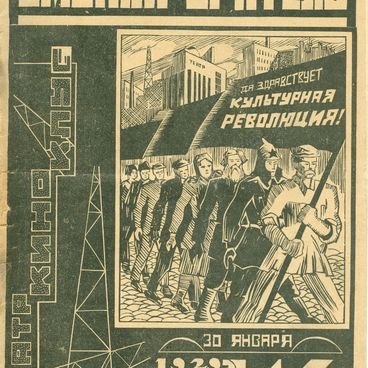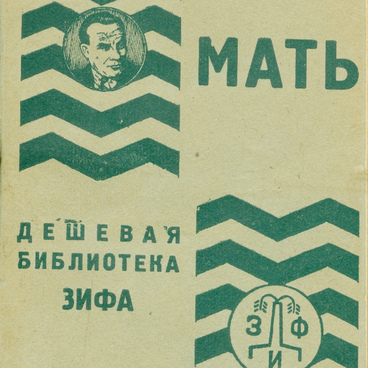In 1921, when Russia began recovering after the Civil War, the first Siberian Soviet literary-arts magazine called ‘Art, ’ arguably the most distinctive at the time, was launched. Although only two low-circulation issues (500 copies each) were published, in 1921 and 1922, the issuance of the magazine was quite an event in the literary community of the city.
The second issue begins with poems by AleksAndr Olenich-Gnenenko, Leonid Martynov, Georgy Vyatkin, and Kondratiy Urmanov and stories by Anton Sorokin. The issue included a sketch ‘Djurabai’ which was, in a way, a parable of the competition of Kirghiz traditional singers by an Omsk-based writer Anton Sorokin. The literary review section of the magazine featured overviews by Grigory Krusser on Whitman ‘The Poet of Equality and World Revolution’ and on Dostoevsky ‘Portraits of Slavery’. Georgy Vyatkin included his critical essays on Alexander Blok, Nikolai Nekrasov, and Fyodor Dostoevsky.
In an essay written on the occasion of the 100th anniversary of the latter, Krusser sought to belittle the writer and expose his works as alien to the reality of the Russian Revolution. This disregard towards the legacy of one of the greatest wordsmiths disguised by what was supposed to be a revolutionist statement was lambasted by the columnist of the Siberian Lights ValeriAn PravdUkhin. He referred to Krusser’s article as “hollow” and “exemplary in terms of its thoughtlessness and hubris”.
In turn, poet Georgy Vyatkin gave a glowing account of Nikolai Nekrasov in the article “The Poetry of Upright Reflections and Responsive Conscience, ” admired Alexander Blok who had made his way from the Fair Lady”s knight to the poet of the Revolution, and wrote about the genius of Dostoevsky.
The magazine included mutually exclusive points of view and works that were sharply different in terms of ideas, aesthetics, manner, and style of writing. Basically, it was all nothing but the reflection of the complex, controversial literary environment of the early 1920-s.
The second issue begins with poems by AleksAndr Olenich-Gnenenko, Leonid Martynov, Georgy Vyatkin, and Kondratiy Urmanov and stories by Anton Sorokin. The issue included a sketch ‘Djurabai’ which was, in a way, a parable of the competition of Kirghiz traditional singers by an Omsk-based writer Anton Sorokin. The literary review section of the magazine featured overviews by Grigory Krusser on Whitman ‘The Poet of Equality and World Revolution’ and on Dostoevsky ‘Portraits of Slavery’. Georgy Vyatkin included his critical essays on Alexander Blok, Nikolai Nekrasov, and Fyodor Dostoevsky.
In an essay written on the occasion of the 100th anniversary of the latter, Krusser sought to belittle the writer and expose his works as alien to the reality of the Russian Revolution. This disregard towards the legacy of one of the greatest wordsmiths disguised by what was supposed to be a revolutionist statement was lambasted by the columnist of the Siberian Lights ValeriAn PravdUkhin. He referred to Krusser’s article as “hollow” and “exemplary in terms of its thoughtlessness and hubris”.
In turn, poet Georgy Vyatkin gave a glowing account of Nikolai Nekrasov in the article “The Poetry of Upright Reflections and Responsive Conscience, ” admired Alexander Blok who had made his way from the Fair Lady”s knight to the poet of the Revolution, and wrote about the genius of Dostoevsky.
The magazine included mutually exclusive points of view and works that were sharply different in terms of ideas, aesthetics, manner, and style of writing. Basically, it was all nothing but the reflection of the complex, controversial literary environment of the early 1920-s.



